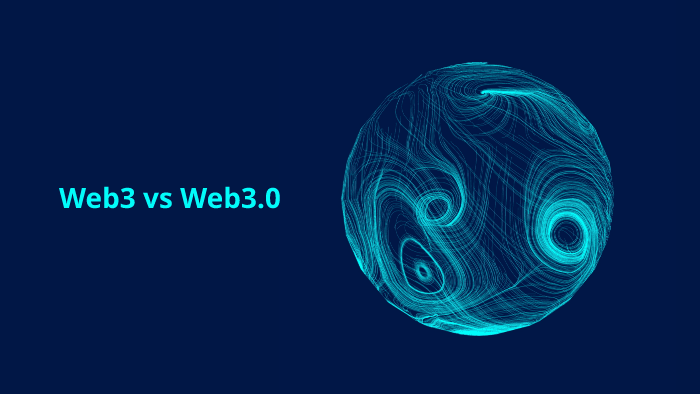Web3 and Web 3.0: Explained

There seems to be a lot of misunderstanding regarding the distinction between Web3 and Web 3.0.
In simple words, Web3 is blockchain-based and Web 3.0 is the semantic web. Here is a quick and simple summary of how they differ in certain aspects.
Evolving into Web 3.0
Before we go into Web 3.0, let's quickly get an idea of the various versions of the Web.
The first generation of the Web, occasionally referred to as Web 1.0 was first described in 1989 by Tim Berners-Lee.
Since the creation of the internet, several technological advances have taken place. The page format used on the initial generation of the Web was identical to that of a printed page, and it was largely static and contained little to no video content. All of that changed in 2004 with the launch of Web 2.0, the subsequent generation of web technology.
Web 2.0 marked the dawn of a new era. It was distinct and independent from all other media, including print and video. Web 2.0 changed the way people interacted with static websites rather than just pushing information. Social networks like Facebook took off and gained popularity during this time.
Web 3.0, as its name suggests, is the next stage in the development of the Web after Web 2.0. The Web 3.0 vision incorporates the “semantic web,” an aspect of the larger idea that Tim Berners-Lee proposed, who is regarded as the inventor of the World Wide Web (www). Berners-Lee's definition of Web 3.0 as the Semantic Web is the idea that internet data is machine-readable.
How does Web 3.0 work?
The semantic Web solution or Web 3.0 is a central repository to store all of your data in one place, called the Solid pod. As a result, consumers can choose who and which applications have access to their data. One can identify yourself online by adding a WebID on top of that pod. It can be equated to how we can sign documents much like with a cryptocurrency wallet. A WebID is also added to the pod, allowing you to identify yourself online, but maintain control of your data.
How is Web3 different?
Web3 on the other hand alludes to the idea of a better internet. Web3 is not an evolution of the internet but rather a proposal for an alternative. The concept behind Web3 was created by Ethereum co-founder Gavin Wood in 2014, to build a decentralized internet to counter the centralized control and domination of a few Web2 giants like Facebook, Amazon, or Google.
It is a platform that uses blockchains, cryptocurrency, and NFTs to return power to users in the form of ownership. Instead of constructing a similar web of resources with hyperlinks, Web3 focuses on addressing problems related to asset ownership, including both digital and physical assets.
However, Web3 and Web 3.0 both provide the same function.
By preserving users' sovereignty over their data, Web3 and Web 3.0 both seek to improve the Internet.
The core difference lies in the approach taken to reach this purpose. The semantic web stores data in solid pods, but Web3 uses decentralized technologies to accomplish the same.
It is also important to note that they use different technology to achieve their goals. Web3 is built upon the blockchain whereas Web 3.0 uses data interchange technology like RDF and SPARQL. OWL and SKOS.
What makes Web3 more important than Web 3.0?
Web3 is currently becoming increasingly popular online. The key advantage or value Web3 provides users is its decentralized organization. Most certainly, centralized networks will not be preferred in the future stage of the internet. In a democratic setting where public distributed ledgers have increased transparency in spending, fairness and dependability will triumph.
Security and privacy will take precedence over monitoring and control in Web 3.0. Data will be completely in the users' hands. They can choose to divulge or withhold the information. Web 3.0 aims to establish a global environment that is decentralized in governance. It will transform how firms communicate with their clients by enabling them to reach end consumers directly.
At the end of the day, the goal of Web 3.0 and Web3 is an improved internet. More importantly, both are still in the development stage. These technologies will likely be merged with other concepts to produce the ultimate iteration of the new internet, which will be more connected, decentralized, secure, and user-centric.
Updated on: 24th November, 2025 6:05 PM